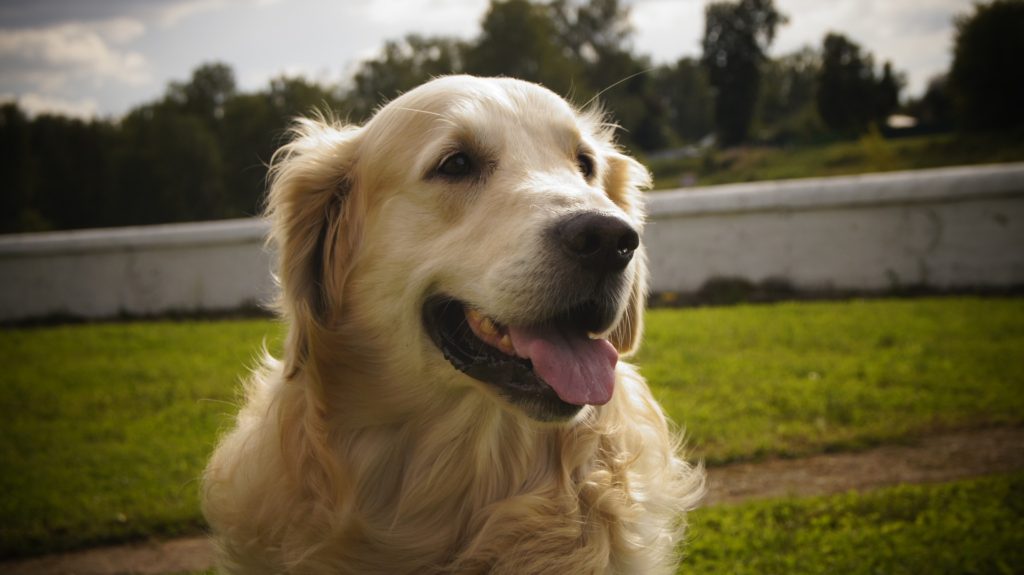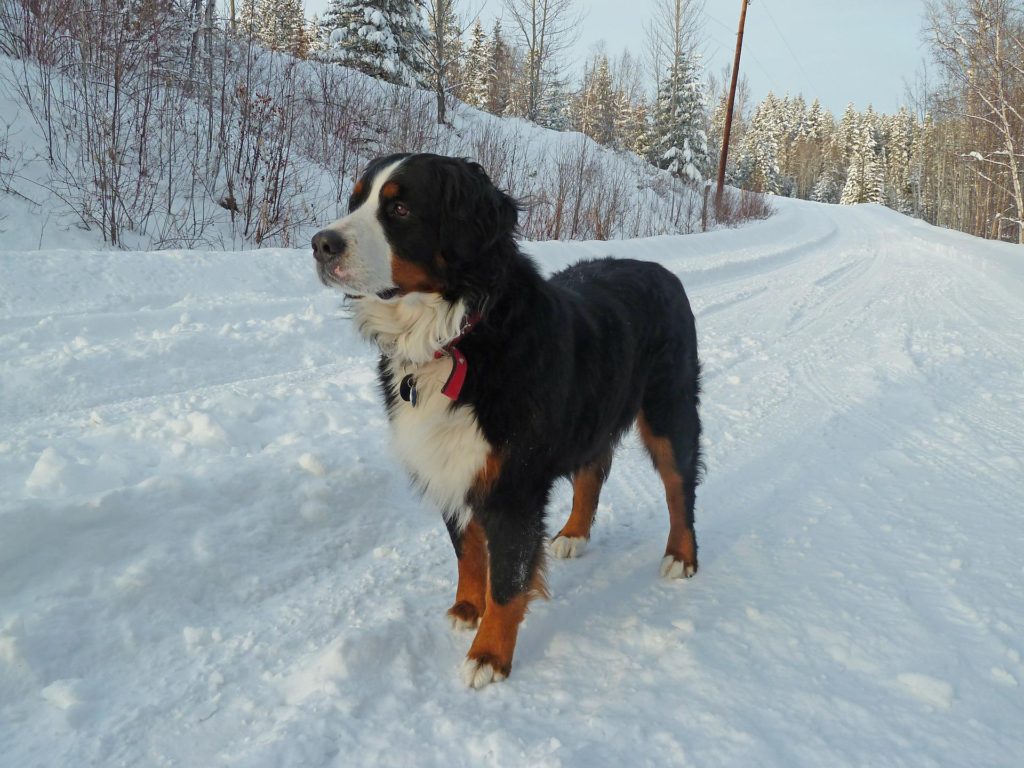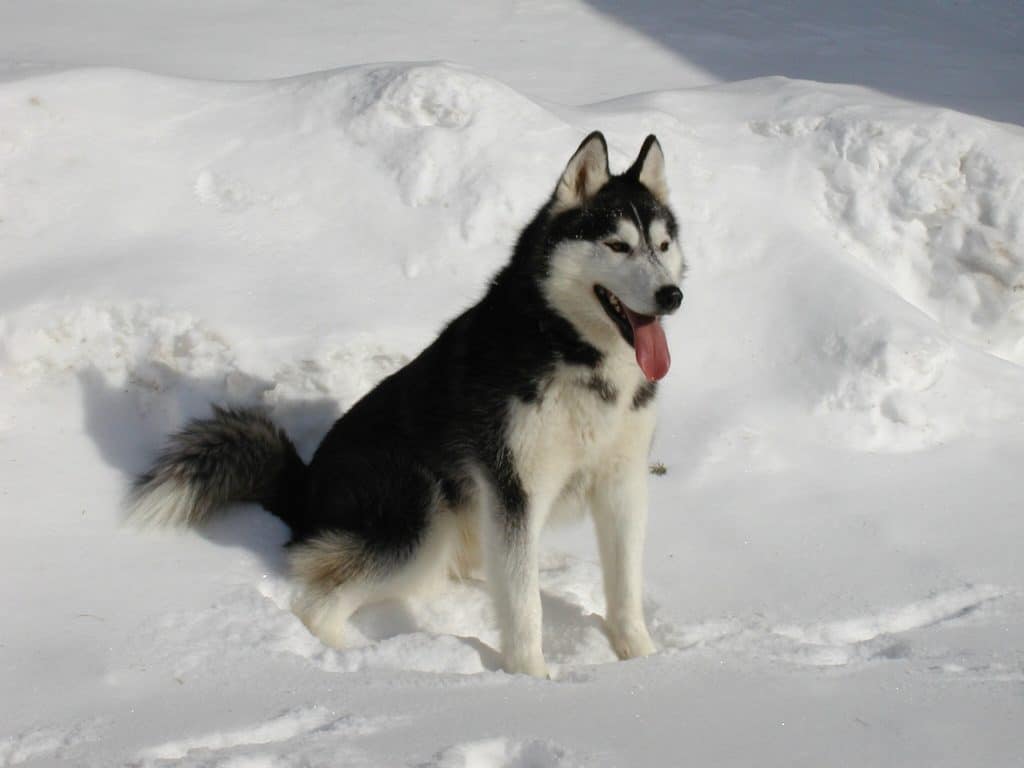Do you know the health risks of your dog’s breed? Whether you’re looking into what breed to get or if you want to know more about your dog’s breed-specific health issues., we’ve got the answer.
Each dog can have some common health problems specific to their breed. These health issues occur after years of breeding and keeping different breeds separate. This separation can cause a lack of genetic diversity, meaning some bad genes get mixed into the existing gene pool. The more dogs people breed with these health issues, the more prevalent these health problems will get.
Fast forward a hundred years or so of dog breeding to today, where we get patterns of health issues within different breeds. For instance, think of the German Shepherd. In the 19th century, they had straight backs with proper and robust hip joints. But today, most german shepherds have a sloped back and are at high risk of hip dysplasia.
The more you know about potential health risks, the better equipped you will be to observe and manage your dog’s health. Prevention is better than cure; the sooner you pick up on a health issue, the quicker your vet can help manage the problem.
The Most Popular Dog Breeds in 2022
There are so many dog breeds that it’s almost impossible to keep track. Over 200 known dog breeds, from pure to mixed breeds, are now recognized worldwide. Naturally, some dog breeds are more popular than others. Look for your dog in the list below and check out their common health problems.
Click on the dog breed that interests you to see their specific common health issues.
- Labrador Retrievers
- French Bulldogs
- Bulldogs
- Golden Retrievers
- German Shepherds
- Poodles
- Beagles
- Rottweiler
- German Short-Haired Pointers
- Daschunds
- Pembroke Welsh Corgis
- Australian Shepherds
- Yorkshire Terriers
- Boxers
- Cavalier King Charles Spaniels
- Great Danes
- Siberian Huskys
- Doberman Pinchers
- Miniature Schnauzers
- Shih Tzus
- Boston Terriers
- Bernese Mountain Dogs
- Pomeranian
- Havanese
- Cane Corso (hepper.com)
If your dog’s breed doesn’t show up in this list, but you want to find out more, please send us an email request at juanri@pawsperspective.com.
Common Dog Health Issues of Popular Breeds in 2022
Common Health Issues of the Labrador Retriever

Allergies
The dog’s body overreacts to specific allergens, causing the immune system to flare up and cause itching, swelling, and redness in the affected area. These allergens can range from pollen to grooming products to food (on the dog). Also, the body part affected depends on where the allergens are. It can be the skin, ears, nose, or lungs.
Arthritis
A condition where the joints become inflamed. It can happen at any joint but mainly at the hips, elbows, shoulders, and knees. When the joints are inflamed, it can cause stiffness and pain when moving the joint.
Bloat aka Gastric Dilation Volvulus (GDV)
An urgent and sudden onset condition where the stomach fills with too much gas. The excess gas can cause the stomach to flip over. As the stomach flips, the blood vessels prevent blood from flowing freely at the site. This is an emergency condition that needs immediate veterinary care.
Cancer
It is a disease where some of the dog’s cells grow faster than they should. These uncontrollably fast-growing cells can spread to other tissues, inhibiting proper functioning. Typical cancers in Labrador Retrievers are lymphoma or lymphosarcoma.
Cold Water Tail
Dogs who like to swim in cold water overexert their tail, causing stiffness. This stiffness happens because dogs use their tails to steer in the water.
Hip and Elbow Dysplasia
A genetic or self-inflicted condition where the hip or elbow joints are affected. The ball part of the joint doesn’t fit well into the socket part and can cause trouble walking or even lameness.
Obesity
A dog is usually obese when they weigh 20% more than their ideal body weight. The ideal weight for the Labrador Retriever is 55-79 lbs (25-36kg), meaning they’re obese at 95 lbs (43kg).
Panosteitis
This condition is also called growing pains, where the long bones’ surfaces get inflamed or swollen. It can cause the dog to experience fever, lethargy, and weight loss.
Progressive Retinal Atrophy (PRA)
A group of degenerative diseases affects the retina of the dog’s eye (the part of the eye that captures light and converts it to images in the dog’s mind, allowing them to see). As the retina deteriorates, the dog’s vision becomes worse and can lead to blindness.
Retinal Dysplasia
Usually, a genetic condition where the eye’s retina has an abnormal development. The retina is the part of the eye that sends light waves to the brain to convert into images, helping the dog see.
Common Health Issues of the French Bulldog
Bacterial Skin Infection
The skin surface, usually in the skin folds, gets infected with bacteria and can cause itchiness, redness, and swelling.
Brachycephalic Obstructive Airway Syndrome (BOAS)
The shorter snout compromises the air flowing through the dog’s nose, mouth, voice box, and windpipe. This compromised airflow causes snoring, loud breathing, and exercise intolerance.
Conjunctivitis
An uncomfortable eye condition where the mucus membrane of the eye gets infected. It causes itchiness, redness, and sometimes swelling of the eye.
Degenerative Myelopathy (DM)
The nerves and supportive tissue of the dog’s spine degenerate, which can cause limping of the dog’s back body or even lameness. It can have both genetic and environmental triggers.
Ear Infections
Infectioninsideof the dog’s ear are usually due to bacteria accumulating in the dark, moist environment of the ear.
Hip Dysplasia
A genetic or self-inflicted condition where one or both hip joints are affected. The ball part of the joint doesn’t fit well into the socket part and can cause trouble walking or even lameness.
Intervertebral disc disease (IVDD)
The shock-absorbing discs between the dog’s vertebrae degenerate and can produce either bulge toward the spinal cord, rupture, slip or herniate. Then the disc can no longer act as a cushion, causing painful mobility problems.
Luxating Patellas
The tissues surrounding the kneecap are not fully developed, causing the kneecap to pop out of the joint frequently.
Upper Respiratory Tract Infection
The dog’s upper airway gets infected with a virus or bacteria and can cause coughing, breathing problems, lethargy, etc.
Common Health Issues of the Bulldog

Allergies
The dog’s body overreacts to specific allergens, causing the immune system to flare up and cause itching, swelling, and redness in the affected area. These allergens can range from pollen to grooming products to food (on the dog). Also, the body part affected depends on where the allergens are. It can be the skin, ears, nose, or lungs.
Arthritis
A condition where the joints become inflamed. It can happen at any joint but mainly at the hips, elbows, shoulders, and knees. When the joints are inflamed, it can cause stiffness and pain when moving the joint.
Bacterial Skin Infections
The skin surface, usually in the skin folds, gets infected with bacteria and can cause itchiness, redness, and swelling.
Brachycephalic Obstructive Airway Syndrome (BOAS)
The shorter snout compromises the air flowing through the dog’s nose, mouth, voice box, and windpipe. This compromised airflow causes snoring, loud breathing, and exercise intolerance.
Cancer
It is a disease where some of the dog’s cells grow faster than they should. These uncontrollably fast-growing cells can spread to other tissues, inhibiting proper functioning. Typical cancers in Bulldogs are lymphoma, skin cancer, oral malignant melanoma, testicular cancer, and breast cancer.
Cherry Eye
A condition where the tear duct in the dog’s third eyelid becomes inflamed. The ligaments keeping the tear duct in place break, and the red swollen tear duct pops out, making a red lump in the inside corners of the eyes.
Keratoconjunctivitis Sicca (Dry Eyes)
A chronic condition where the dog’s eyes don’t make enough moisture (tears) to keep the eye from drying out. This dryness can cause itchiness and cloudy or dull eyeballs.
Hip Dysplasia
A genetic or self-inflicted condition where one or both hip joints are affected. The ball part of the joint doesn’t fit well into the socket part and can cause trouble walking or even lameness.
Hot Spots
Lesions on the skin that are red and inflamed are usually aggravated by the dog licking or scratching at the area. If left untreated, these lesions can quickly ooze and contain pus.
Common Health Issues of the Golden Retriever

Aortic Stenosis
A genetic heart condition where there is a narrowing at the heart’s aortic valve. The aorta is the largest artery in the body. It allows oxygen-rich blood to flow from the heart to the rest of the body. So, not enough oxygen-rich blood can flow out of the heart if there is a narrowing at the aortic valve. This condition can lead to heart failure.
Bloat aka Gastric Dilation Volvulus (GDV)
An urgent and sudden onset condition where the stomach fills with too much gas. The excess gas can cause the stomach to flip over. As the stomach flips, the blood vessels prevent blood from flowing freely at the site. This is an emergency condition that needs immediate veterinary care.
Cancer
It is a disease where some of the dog’s cells grow faster than they should. These uncontrollably fast-growing cells can spread to other tissues, inhibiting proper functioning. Typical cancers in Golden Retrievers are hemangiosarcoma, lymphoid neoplasia, and osteosarcoma.
Cataracts
A protein imbalance causes a white cloudy layer to cover the eye lens, making it difficult for the dog to see.
Ear Infection
Infectioninsideof the dog’s ear are usually due to bacteria accumulating in the dark, moist environment of the ear.
Hip and Elbow Dysplasia
A genetic or self-inflicted condition where the hip or elbow joints are affected. The ball part of the joint doesn’t fit well into the socket part and can cause trouble walking or even lameness.
Lick Granuloma
Infection of the skin is caused by obsessive licking, typically at wrist joints in the front legs, but can occur on any body part.
Lipomas
Masses or tumors develop underneath the skin, usually in older dogs.
Luxating Patella
The tissues surrounding the kneecap are not fully developed, causing the kneecap to pop out of the joint frequently.
Panosteitis
This condition is also referred to as growing pains where the longer leg bones’ surfaces are inflamed or swollen. It can cause the dog to experience fever, lethargy, and weight loss.
Sebaceous Adenitis
A skin disease where the sebaceous glands get infected and cause hair loss. The sebaceous glands are oily glands that secrete sebum to moisten the skin.
Von Willebrand disease (VWD)
VWD is a blood disorder where the dog’s blood can’t clot as well as it should and can lead to excessive, unnecessary bleeding.
Common Health Issues of the German Shepherd

Allergies
The dog’s body overreacts to specific allergens, causing the immune system to flare up and cause itching, swelling, and redness in the affected area. These allergens can range from pollen to grooming products to food (on the dog). Also, the body part affected depends on where the allergens are. It can be the skin, ears, nose, or lungs.
Bladder Stones
Minerals in the bladder form solid rock-like structures that vary in size. The smaller stones can pass through the urinary canal, where the larger stones can cause an obstruction. This obstruction makes urinating difficult (if it’s partial), or the dog can’t urinate at all (if it’s a complete obstruction).
Bloat aka Gastric Dilation Volvulus (GDV)
An urgent and sudden onset condition where the stomach fills with too much gas. The excess gas can cause the stomach to flip over. As the stomach flips, the blood vessels prevent blood from flowing freely at the site. This is an emergency condition that needs immediate veterinary care.
Cancer
It is a disease where some of the dog’s cells grow faster than they should. These uncontrollably fast-growing cells can spread to other tissues, inhibiting proper functioning. Typical cancers in German Shepherds are hemangiosarcoma, osteosarcoma, lymphoma, and melanoma.
Cataracts
A protein imbalance causes a white cloudy layer to cover the eye lens, making it difficult for the dog to see.
Diabetes
A condition where the dog’s body doesn’t make enough insulin or doesn’t make it at all. It affects the amount of sugar (glucose) in the dog’s blood which causes excessive thirst, chronic infections, decreased appetite, etc.
Epilepsy
Unexpected seizures are caused by some abnormality in the dog’s brain. Each dog’s seizures can look different, from running around to physically shaking uncontrollably.
Hip and Elbow Dysplasia
A genetic or self-inflicted condition where the hip or elbow joints are affected. The ball part of the joint doesn’t fit well into the socket part and can cause trouble walking or even lameness.
Pancreatitis
A condition where the pancreas gets swollen and infected. The pancreas is a small organ that regulates a dog’s blood sugar and helps digest food. So if this organ is swollen, the dog can experience nausea, vomiting, decreased appetite, and abdominal pain.
Panosteitis
This condition is also referred to as growing pains where the longer leg bones’ surfaces are inflamed or swollen. It can cause the dog to experience fever, lethargy, and weight loss.
Common Health Issues of the Poodle

Addison’s Disease
The dog’s adrenal glands don’t produce enough corticosteroid hormones and cause symptoms like vomiting, lack of appetite, lethargy, etc. The adrenal glands are two small glands that sit next to your dog’s kidneys.
Bloat aka Gastric Dilation Volvulus (GDV)
An urgent and sudden onset condition where the stomach fills with too much gas. The excess gas can cause the stomach to flip over. As the stomach flips, the blood vessels prevent blood from flowing freely at the site. This is an emergency condition that needs immediate veterinary care.
Cancer
It is a disease where some of the dog’s cells grow faster than they should. These uncontrollably fast-growing cells can spread to other tissues, inhibiting proper functioning. Typical cancers in Poodles are lymphoma, skin cancer, squamous cell carcinoma, mammary gland carcinomas, osteosarcomas, and hemangiosarcoma.
Epilepsy
Unexpected seizures are caused by some abnormality in the dog’s brain. Each dog’s seizures can look different, from running around to physically shaking uncontrollably.
Hip Dysplasia
A genetic or self-inflicted condition where one or both hip joints are affected. The ball part of the joint doesn’t fit well into the socket part and can cause trouble walking or even lameness.
Hypoglycemia in Puppies
A condition where the puppy’s blood sugar levels get too low and can cause weakness, low energy levels, drowsiness, and fainting.
Legg-Calve-Perthes Disease (LCP)
A condition where the head of the femur spontaneously degenerates, leaving the bone brittle and can cause hip problems. The femur is the top part of the hind leg bones. It is the ball part in the ball and socket joint of the hip.
Luxating Patella
The tissues surrounding the kneecap are not fully developed, causing the kneecap to pop out of the joint frequently.
Progressive Retinal Atrophy (PRA)
A group of degenerative diseases affects the retina of the dog’s eye (the part of the eye that captures light and converts it to images in the dog’s mind, allowing them to see). As the retina deteriorates, the dog’s vision becomes worse and can lead to blindness.
Sebaceous Adenitis
A skin disease where the sebaceous glands get infected and cause hair loss. The sebaceous glands are oily glands that secrete sebum to moisten the skin.
Von Willebrand disease (VWD)
VWD is a blood disorder where the dog’s blood can’t clot as well as it should and can lead to excessive, unnecessary bleeding.
Common Health Issues of the Beagle
Cataracts
A protein imbalance causes a white cloudy layer to cover the eye lens, making it difficult for the dog to see.
Cherry Eye
A condition where the tear duct in the dog’s third eyelid becomes inflamed. The ligaments keeping the tear duct in place break, and the red swollen tear duct pops out, making a red lump in the inside corners of the eyes.
Epilepsy
Unexpected seizures are caused by some abnormality in the dog’s brain. Each dog’s seizures can look different, from running around to physically shaking uncontrollably.
Glaucoma
The pressure inside the eye is higher than it should be. This pressure can damage the nerves in the eye and the retina, making it difficult for the dog to see.
Hypothyroidism
The dog’s thyroid gland doesn’t excrete enough of the thyroid hormone, causing their metabolism to slow down. This condition can cause unexpected weight gain, skin and coat problems, and even behavioral issues.
Intervertebral disc disease (IVDD)
The shock-absorbing discs between the dog’s vertebrae degenerate and can produce either bulge toward the spinal cord, rupture, slip or herniate. Then the disc can no longer act as a cushion, causing painful mobility problems.
Obesity
A dog is usually obese when they weigh 20% more than their ideal body weight. The ideal weight for the Beagle is 19-24 lbs (9-11kg), meaning they’re obese at 29 lbs (13kg).
Progressive Retinal Atrophy (PRA)
A group of degenerative diseases affects the retina of the dog’s eye (the part of the eye that captures light and converts it to images in the dog’s mind, allowing them to see). As the retina deteriorates, the dog’s vision becomes worse and can lead to blindness.
Common Health Issues of the Rottweiler

Aortic Stenosis
A genetic heart condition where there is a narrowing at the heart’s aortic valve. The aorta is the largest artery in the body. It allows oxygen-rich blood to flow from the heart to the rest of the body. So, not enough oxygen-rich blood can flow out of the heart if there is a narrowing at the aortic valve. This condition can lead to heart failure.
Bloat aka Gastric Dilation Volvulus (GDV)
An urgent and sudden onset condition where the stomach fills with too much gas. The excess gas can cause the stomach to flip over. As the stomach flips, the blood vessels prevent blood from flowing freely at the site. This is an emergency condition that needs immediate veterinary care.
Cataracts
A protein imbalance causes a white cloudy layer to cover the eye lens, making it difficult for the dog to see.
Hip and Elbow Dysplasia
A genetic or self-inflicted condition where the hip or elbow joints are affected. The ball part of the joint doesn’t fit well into the socket part and can cause trouble walking or even lameness.
Hypothyroidism
The dog’s thyroid gland doesn’t excrete enough of the thyroid hormone, causing their metabolism to slow down. This condition can cause unexpected weight gain, skin and coat problems, and even behavioral issues.
Osteochondrosis Dissecans (OCD)
The cartilage of the bone developed abnormally, affecting the dog’s shoulders, elbows, and knees. This abnormal cartilage can then form a flap, leading to lameness.
Panosteitis
This condition is also referred to as growing pains where the longer leg bones’ surfaces are inflamed or swollen. It can cause the dog to experience fever, lethargy, and weight loss.
Progressive Retinal Atrophy (PRA)
A group of degenerative diseases affects the retina of the dog’s eye (the part of the eye that captures light and converts it to images in the dog’s mind, allowing them to see). As the retina deteriorates, the dog’s vision becomes worse and can lead to blindness.
Von Willebrand disease (VWD)
VWD is a blood disorder where the dog’s blood can’t clot as well as it should and can lead to excessive, unnecessary bleeding.
Wobbler’s Disease
A neurologic disease resulting from excessive pressure on the spinal cord at the lower part of the dog’s neck. This vertebrae compression can negatively affect the nerves and spinal cord itself.
Common Health Issues of the German Short-Haired Pointer

Bloat aka Gastric Dilation Volvulus (GDV)
An urgent and sudden onset condition where the stomach fills with too much gas. The excess gas can cause the stomach to flip over. As the stomach flips, the blood vessels prevent blood from flowing freely at the site. This is an emergency condition that needs immediate veterinary care.
Cardiomyopathy
The heart muscles degenerate and lose their ability to pump blood adequately through the rest of the body. The muscle walls become thinner and struggle to contract. This condition can lead to heart failure.
Ectropion
An eyelid abnormality where the lower eyelid rolls outward and away from the eye. It causes droopy eyes where the moist part of the inner eyelid is exposed.
Entropion
An eyelid abnormality where the eyelids roll inward, causing the lashes to rub against the eyeball. It causes discomfort, itchiness, and sensitivity in the eye.
Hip Dysplasia
A genetic or self-inflicted condition where one or both hip joints are affected. The ball part of the joint doesn’t fit well into the socket part and can cause trouble walking or even lameness.
Hypothyroidism
The dog’s thyroid gland doesn’t excrete enough of the thyroid hormone, causing their metabolism to slow down. This condition can cause unexpected weight gain, skin and coat problems, and even behavioral issues.
Intervertebral disc disease (IVDD)
The shock-absorbing discs between the dog’s vertebrae degenerate and can produce either bulge toward the spinal cord, rupture, slip or herniate. Then the disc can no longer act as a cushion, causing painful mobility problems.
Osteochondrosis Dissecans (OCD)
The cartilage of the bone developed abnormally, affecting the dog’s shoulders, elbows, and knees. This abnormal cartilage can then form a flap, leading to lameness.
Progressive Retinal Atrophy (PRA)
A group of degenerative diseases affects the retina of the dog’s eye (the part of the eye that captures light and converts it to images in the dog’s mind, allowing them to see). As the retina deteriorates, the dog’s vision becomes worse and can lead to blindness.
Von Willebrand disease (VWD)
VWD is a blood disorder where the dog’s blood can’t clot as well as it should and can lead to excessive, unnecessary bleeding.
Common Health Issues of the Daschund

Cataracts
A protein imbalance causes a white cloudy layer to cover the eye lens, making it difficult for the dog to see.
Cushing’s Disease
A condition where the dog’s body makes too much cortisol. Cortisol is a hormone that regulates body weight, stress levels, immune responses, and so much more. A dog with this condition will experience excessive thirst, lethargy, thinning of the skin, etc.
Degenerative Mitral Valve Disease
The valve separating the two left heart chambers degenerates and doesn’t seal as tightly as it should. This faulty valve causes blood to flow backward into the chamber it came from.
Epilepsy
Unexpected seizures are caused by some abnormality in the dog’s brain. Each dog’s seizures can look different, from running around to physically shaking uncontrollably.
Hip and Elbow Dysplasia
A genetic or self-inflicted condition where the hip or elbow joints are affected. The ball part of the joint doesn’t fit well into the socket part and can cause trouble walking or even lameness.
Hypothyroidism
The dog’s thyroid gland doesn’t excrete enough of the thyroid hormone, causing their metabolism to slow down. This condition can cause unexpected weight gain, skin and coat problems, and even behavioral issues.
Intervertebral disc disease (IVDD)
The shock-absorbing discs between the dog’s vertebrae degenerate and can produce either bulge toward the spinal cord, rupture, slip or herniate. Then the disc can no longer act as a cushion, causing painful mobility problems.
Luxating Patella
The tissues surrounding the kneecap are not fully developed, causing the kneecap to pop out of the joint frequently.
Narcolepsy
A neurologic condition where the dog suddenly collapses, loses movement and falls asleep. It is categorized by excessive sleepiness during the daytime.
Obesity
A dog is usually obese when they weigh 20% more than their ideal body weight. The ideal weight for the Duschund is 20-26 lbs (9-12kg), meaning they’re obese at 31 lbs (14kg).
Progressive Retinal Atrophy (PRA)
A group of degenerative diseases affects the retina of the dog’s eye (the part of the eye that captures light and converts it to images in the dog’s mind, allowing them to see). As the retina deteriorates, the dog’s vision becomes worse and can lead to blindness.
Common Health Issues of the Pembroke Welsh Corgi

Cataracts
A protein imbalance causes a white cloudy layer to cover the eye lens, making it difficult for the dog to see.
Cutaneous Asthenia (also known as Ehlers-Danlos syndrome)
The connective tissue of the skin, keeping the skin attached to the muscles and bones, gets too stretchy. So, it can cause the dog’s skin to wobble and cause injuries like bruises or blood blisters.
Cystinuria
The dog’s body has too much protein (called cysteine) that the body needs to get rid of through urine. This excess protein can cause urinary stones and can be extremely painful.
Degenerative Myelopathy (DM)
The nerves and supportive tissue of the dog’s spine degenerate, which can cause limping of the dog’s back body or even lameness. It can have both genetic and environmental triggers.
Epilepsy
Unexpected seizures are caused by some abnormality in the dog’s brain. Each dog’s seizures can look different, from running around to physically shaking uncontrollably.
Hip Dysplasia
A genetic or self-inflicted condition where one or both hip joints are affected. The ball part of the joint doesn’t fit well into the socket part and can cause trouble walking or even lameness.
Intervertebral disc disease (IVDD)
The shock-absorbing discs between the dog’s vertebrae degenerate and can produce either bulge toward the spinal cord, rupture, slip or herniate. Then the disc can no longer act as a cushion, causing painful mobility problems.
Obesity
A dog is usually obese when they weigh 20% more than their ideal body weight. The ideal weight for the Pembroke Welsh Corgi is 22-30 lbs (10-14kg), meaning they’re obese at 36 lbs (16kg).
Patent Ductus Arteriosus (PDA)
A congenital heart defect where the dog’s circulation didn’t go through all the changes it should have. It is a congenital heart disease that causes unoxygenated blood to bypass the lungs, not allowing the blood to get enough oxygen.
Progressive Retinal Atrophy (PRA)
A group of degenerative diseases affects the retina of the dog’s eye (the part of the eye that captures light and converts it to images in the dog’s mind, allowing them to see). As the retina deteriorates, the dog’s vision becomes worse and can lead to blindness.
Von Willebrand disease (VWD)
VWD is a blood disorder where the dog’s blood can’t clot as well as it should and can lead to excessive, unnecessary bleeding.
Common Health Issues of the Australian Shepherd

Cancer
It is a disease where some of the dog’s cells grow faster than they should. These uncontrollably fast-growing cells can spread to other tissues, inhibiting proper functioning. Typical cancers in Australian Shepherds are hemangiosarcoma and lymphoma.
Cataracts
A protein imbalance causes a white cloudy layer to cover the eye lens, making it difficult for the dog to see.
Collie Eye Anomaly
A congenital eye condition where the gene responsible for eye development is mutated. This disease affects many layers of the eye. It can affect the dog in various ways, from blindness to sunken eyeballs (enophthalmia) to smaller-than-usual eyeballs (microphthalmia).
Colombas
A congenital eye condition where an area of the dog’s eye is underdeveloped. Usually, there is a hole in the dog’s iris (the colored part of the eye), but other eye parts can also be affected, like the eyelids, nerves, or lense. The tissue affected will determine the dog’s symptoms.
Distichiasis
A condition where extra eyelashes grow in an unusual location on the eyelid. While eyelashes usually grow on the skin of the eyelash, these extra lashes can grow on the surface between the lid and the eyeball.
Epilepsy
Unexpected seizures are caused by some abnormality in the dog’s brain. Each dog’s seizures can look different, from running around to physically shaking uncontrollably.
Hip and Elbow Dysplasia
A genetic or self-inflicted condition where the hip or elbow joints are affected. The ball part of the joint doesn’t fit well into the socket part and can cause trouble walking or even lameness.
Hypothyroidism
The dog’s thyroid gland doesn’t excrete enough of the thyroid hormone, causing their metabolism to slow down. This condition can cause unexpected weight gain, skin and coat problems, and even behavioral issues.
Multi-drug Sensitivity (MDR1)
A genetic mutation where the MDR1 gene is affected. This mutation makes these dogs more prone to adverse reactions to some medications. So, these dogs are more sensitive to some drugs, hence the term multi-drug sensitivity.
Progressive Retinal Atrophy (PRA)
A group of degenerative diseases affects the retina of the dog’s eye (the part of the eye that captures light and converts it to images in the dog’s mind, allowing them to see). As the retina deteriorates, the dog’s vision becomes worse and can lead to blindness.
Common Health Issues of the Yorkshire Terrier
Cataracts
A protein imbalance causes a white cloudy layer to cover the eye lens, making it difficult for the dog to see.
Collapsed Trachea
A chronic disease where the cartilage rings holding the trachea (windpipe) becomes weak. It can cause the trachea to collapse and make breathing difficult.
Hemorrhagic Gastroenteritis
A sudden onset disease where large amounts of fluids enter the dog’s gut. These excess fluids in the gut can cause vomiting and blood in the stools.
Hypoglycemia
A condition where the blood sugar levels get too low can cause weakness, low energy levels, drowsiness, and fainting.
Legg-Calve-Perthes Disease (LCP)
A condition where the head of the femur spontaneously degenerates, leaving the bone brittle and can cause hip problems. The femur is the top part of the hind leg bones. It is the ball part in the ball and socket joint of the hip.
Liver Shunt
A blood vessel abnormality where blood from organs enters the bloodstream without passing through the liver first. Because the liver is responsible for removing toxins from the blood, this disease allows toxic blood to re-enter the bloodstream. This defect can lead to seizures, behavioral problems, and growth problems.
Luxating Patella
The tissues surrounding the kneecap are not fully developed, causing the kneecap to pop out of the joint frequently.
Pancreatitis
A condition where the pancreas gets swollen and infected. The pancreas is a small organ that regulates a dog’s blood sugar and helps digest food. So if this organ is swollen, the dog can experience nausea, vomiting, decreased appetite, and abdominal pain.
Periodontal Disease
Plaque and tartar accumulate on the dog’s teeth, causing the gums to get inflamed. If left untreated, this diseIf left untreated can affect the dog’s gums, teeth, and even jawbones.
Progressive Retinal Atrophy (PRA)
A group of degenerative diseases affects the retina of the dog’s eye (the part of the eye that captures light and converts it to images in the dog’s mind, allowing them to see). As the retina deteriorates, the dog’s vision becomes worse and can lead to blindness.
Retinal Dysplasia
Usually, a genetic condition where the eye’s retina has an abnormal development. The retina is the part of the eye that sends light waves to the brain to convert into images, helping the dog see.
Skin Allergies
The dog’s body overreacts to specific allergens, causing the immune system to flare up and cause itching, swelling, and redness in the affected area. These allergens can range from pollen to grooming products to food (on the dog). Also, the body part affected depends on where the allergens are. It can be the skin, ears, nose, or lungs.
Common Health Issues of the Boxer

Aortic Stenosis
A genetic heart condition where there is a narrowing at the heart’s aortic valve. The aorta is the largest artery in the body. It allows oxygen-rich blood to flow from the front to the rest of the body. So, not enough oxygen-rich blood can flow out of the heart if there is a narrowing at the aortic valve. This condition can lead to heart failure.
Arthritis
A condition where the joints become inflamed. It can happen at any joint but mainly at the hips, elbows, shoulders, and knees. When the joints are inflamed, it can cause stiffness and pain when moving the joint.
Bloat aka Gastric Dilation Volvulus (GDV)
An urgent and sudden onset condition where the stomach fills with too much gas. The excess gas can cause the stomach to flip over. As the stomach flips, the blood vessels prevent blood from flowing freely at the site. This is an emergency condition that needs immediate veterinary care.
Cancer
It is a disease where some of the dog’s cells grow faster than they should. These uncontrollably fast-growing cells can spread to other tissues, inhibiting proper functioning. Typical cancers in Boxers are lymphoma, hemangiosarcoma, mast cell tumors, and brain tumors.
Cardiomyopathy
The heart muscles degenerate and lose their ability to pump blood adequately through the rest of the body. The muscle walls become thinner and struggle to contract. This condition can lead to heart failure.
Degenerative Myelopathy (DM)
The nerves and supportive tissue of the dog’s spine degenerate, which can cause limping of the dog’s back body or even lameness. It can have both genetic and environmental triggers.
Hip Dysplasia
A genetic or self-inflicted condition where one or both hip joints are affected. The ball part of the joint doesn’t fit well into the socket part and can cause trouble walking or even lameness.
Seizures
A neurologic condition where the dog’s normal brain functioning gets disturbed. This disturbance is usually involuntary and causes temporary seizures or fits.
Ulcerative Colitis
It is a condition where the large dog’s large intestine swells and leads to diarrhea and urgency to defecate more frequently.
Common Health Issues of the Cavelier King Charles Spaniel

Allergies
The dog’s body overreacts to specific allergens, causing the immune system to flare up and cause itching, swelling, and redness in the affected area. These allergens can range from pollen to grooming products to food (on the dog). Also, the body part affected depends on where the allergens are. It can be the skin, ears, nose, or lungs.
Cataracts
A protein imbalance causes a white cloudy layer to cover the eye lens, making it difficult for the dog to see.
Conjunctivitis
An uncomfortable eye condition where the mucus membrane of the eye gets infected. It causes itchiness, redness, and sometimes swelling of the eye.
Ear Infection
Infectioninsideof the dog’s ear are usually due to bacteria accumulating in the dark, moist environment of the ear.
Gastritis
Gastritis is a condition where the lining of the stomach becomes inflamed. This condition can be short and sudden (acute) or over time (chronic).
Hip Dysplasia
A genetic or self-inflicted condition where one or both hip joints are affected. The ball part of the joint doesn’t fit well into the socket part and can cause trouble walking or even lameness.
Luxating Patella
A conditiThesurrounding the kneecap is not fully developed, causing the kneecap to pop out of the joint frequently.
Degenerative Mitral Valve Disease
The valve separating the two left heart chambers degenerates and doesn’t seal as tightly as it should. This faulty valve causes blood to flow backward into the chamber it came from.
Syringomyelia
A condition where cavities form in the dog’s spinal cord fill with fluid. These fluid-filled pockets are sensitive to back and neck, seizures, paralysis, etc.
Common Health Issues of the Great Dane

Allergies
The dog’s body overreacts to specific allergens, causing the immune system to flare up and cause itching, swelling, and redness in the affected area. These allergens can range from pollen to grooming products to food (on the dog). Also, the body part affected depends on where the allergens are. It can be the skin, ears, nose, or lungs.
Bloat aka Gastric Dilation Volvulus (GDV)
An urgent and sudden onset condition where the stomach fills with too much gas. The excess gas can cause the stomach to flip over. As the stomach flips, the blood vessels prevent blood from flowing freely at the site. This is an emergency condition that needs immediate veterinary care.
Cardiomyopathy
The heart muscles degenerate and lose their ability to pump blood adequately through the rest of the body. The muscle walls become thinner and struggle to contract. This condition can lead to heart failure.
Cataracts
A protein imbalance causes a white cloudy layer to cover the eye lens, making it difficult for the dog to see.
Epilepsy
Unexpected seizures are caused by some abnormality in the dog’s brain. Each dog’s seizures can look different.
Hip Dysplasia
A genetic or self-inflicted condition where one or both hip joints are affected. The ball part of the joint doesn’t fit well into the socket part and can cause trouble walking or even lameness.
Osteosarcoma
A type of bone cancer where the bone cells divide too quickly and can produce tumors.
Von Willebrand disease (VWD)
VWD is a blood disorder where the dog’s blood can’t clot as well as it should and can lead to excessive, unnecessary bleeding.
Wobbler’s Disease
A neurologic disease resulting from excessive pressure on the spinal cord at the lower part of the dog’s neck. This vertebrae compression can negatively affect the nerves and spinal cord itself.
Common Health Issues of the Siberian Husky
Cataracts
A protein imbalance causes a white cloudy layer to cover the eye lens, making it difficult for the dog to see.
Corneal Dystrophy
It is a genetic eye condition where the eye’s cornea becomes progressively more cloudy. The cornea is the transparent part of the eye covering the pupil and the colored part of the eye.
Heat Stroke
A condition temperature gets too high because their environment is too hot. It is usually when a dog’s body temperature is more than 103°F (39.4°C).
Hip Dysplasia
A genetic or self-inflicted condition where one or both hip joints are affected. The ball part of the joint doesn’t fit well into the socket part and can cause trouble walking or even lameness.
Hot Spots
Lesions on the skin that are red and inflamed are usually aggravated by the dog licking or scratching at the area. If left untreated, these lesions can quickly ooze and contain pus.
Hypothyroidism
A conditiTheyroid gland doesn’t excrete enough of the thyroid hormone, causing their metabolism to slow down. This condition can cause unexpected weight gain, skin and coat problems, and even behavioral issues.
Progressive Retinal Atrophy (PRA)
A group of degenerative diseases affects the retina of the dog’s eye (the part of the eye that captures light and converts it to images in the dog’s mind, allowing them to see). As the retina deteriorates, the dog’s vision becomes worse and can lead to blindness.
Uveodermatologic Syndrome
A rare immune disease where the dog’s body starts to fight the perfectly normal skin pigment cells. This condition can affect the dog’s eye, skin, and nervous system.
Zinc Deficiency
When a dog’s body doesn’t have enough zinc, a lack of this mineral can cause hair loss, poor growth, and skin lesions.
Common Health Issues of the Doberman Pincher

Bloat aka Gastric Dilation Volvulus (GDV)
An urgent and sudden onset condition where the stomach fills with too much gas. The excess gas can cause the stomach to flip over. As the stomach flips, the blood vessels prevent blood from flowing freely at the site. This is an emergency condition that needs immediate veterinary care.
Cardiomyopathy
The heart muscles degenerate and lose their ability to pump blood adequately through the rest of the body. The muscle walls become thinner and struggle to contract. This condition can lead to heart failure.
Hip Dysplasia
A genetic or self-inflicted condition where one or both hip joints are affected. The ball part of the joint doesn’t fit well into the socket part and can cause trouble walking or even lameness.
Hypothyroidism
A conditiTheyroid gland doesn’t excrete enough of the thyroid hormone, causing their metabolism to slow down. This condition can cause unexpected weight gain, skin and coat problems, and even behavioral issues.
Intervertebral disc disease (IVDD)
The shock-absorbing discs between the dog’s vertebrae degenerate and can produce either bulge toward the spinal cord, rupture, slip or herniate. Then the disc can no longer act cushion, causing painful mobility problems.
Osteosarcoma
A type of bone cancer where the bone cells divide too quickly and can produce tumors.
Von Willebrand disease (VWD)
VWD is a blood disorder where the dog’s blood can’t clot as well as it should and can lead to excessive, unnecessary bleeding.
Wobbler’s Disease
A neurologic disease resulting from excessive pressure on the spinal cord at the lower part of the dog’s neck. This vertebrae compression can negatively affect the nerves and spinal cord itself.
Common Health Issues of the Miniature Schnauzer

Allergies
The dog’s body overreacts to specific allergens, causing the immune system to flare up and cause itching, swellinThe dog’s body overreacts to specific allergens, causing the immune system to flare up and cause itching, swelling, and redness in the affected area. These allergens can range from pollen to grooming products to food (on the dog). Also, the body part affected depends on where the allergens are. It can be the skin, ears, nose, or lungs.
Bladder Stones
Minerals in the bladder form solid rock-like structures that vary in size. The smaller stones can pass through the urinary canal, where the larger stones can cause an obstruction. This obstruction makes urinating difficult (if it’s partial), or the dog can’t urinate at all (if it’s a complete obstruction).
Cataracts
A protein imbalance causes a white cloudy layer to cover the eye lens, making it difficult for the dog to see.
Diabetes
A condition where the dog’s body doesn’t make enough insulin or doesn’t make it at all. It affects the amount of sugar (glucose) in the dog’s blood which causes excessive thirst, chronic infections, decreased appetite, etc.
Epilepsy
Unexpected seizures are caused by some abnormality in the dog’s brain. Each dog’s seizures can look different, from running around to physically shaking uncontrollably.
Hip Dysplasia
A genetic or self-inflicted condition where one or both hip joints are affected. The ball part of the joint doesn’t fit well into the socket part and can cause trouble walking or even lameness.
Hyperlipidemia
The dog’s blood has more lipids (fats) than it should. It is the same as high cholesterol levels causing plaque to build up in the blood vessels, obscuring blood flow.
Liver Shunt
It happens when a blood vessel abnormality where blood from organs enters the bloodstream without passing through the liver first. Because the liver is responsible for removing toxins from the blood, this disease allows toxic blood to re-enter the bloodstream. This defect can lead to seizures, behavioral problems, and growth problems.
Myotonia Congenita
A painful genetic condition where the muscle fibers of the dog contract. It causes stiffness and delayed relaxation of skeletal muscles after voluntarily contracting them.
Pancreatitis
A condition where the pancreas gets swollen and infected. The pancreas is a small organ that regulates a dog’s blood sugar and helps digest food. So if this organ is swollen, the dog can experience nausea, vomiting, decreased appetite, and abdominal pain.
Common Health Issues of the Shih Tzu

Brachycephalic Obstructive Airway Syndrome (BOAS)
The shorter snout compromises the air flowing through the dog’s nose, mouth, voice box, and windpipe. This compromised airflow causes snoring, loud breathing, and exercise intolerance.
Cataracts
A protein imbalance causes a white cloudy layer to cover the eye lens, making it difficult for the dog to see.
Ear Infection
Infectioninsideof the dog’s ear are usually due to bacteria accumulating in the dark, moist environment of the ear.
Heat Stroke
A condition temperature gets too high because their environment is too hot. It is usually when a dog’s body temperature is more than 103°F (39.4°C).
Hip Dysplasia
A genetic or self-inflicted condition where one or both hip joints are affected. The ball part of the joint doesn’t fit well into the socket part and can cause trouble walking or even lameness.
Hypothyroidism
A conditiTheyroid gland doesn’t excrete enough of the thyroid hormone, causing their metabolism to slow down. This condition can cause unexpected weight gain, skin and coat problems, and even behavioral issues.
Intervertebral disc disease (IVDD)
The shock-absorbing discs between the dog’s vertebrae degenerate and can produce either bulge toward the spinal cord, rupture, slip or herniate. Then the disc can no longer cushion, causing painful mobility problems.
Luxating Patella
A conditiThesurrounding the kneecap is not fully developed, causing the kneecap to pop out of the joint frequently.
Retinal Dysplasia
Usually, a genetic condition where the eye’s retina has an abnormal development. The retina is the part of the eye that sends light waves to the brain to convert into images, helping the dog see.
Common Health Issues of the Boston Terrier
Allergies
The dog’s body overreacts to specific allergens, causing the immune system to flare up and cause itching, swelling, and redness in the affected area. These allergens can range from pollen to grooming products to food (on the dog). Also, the body part affected depends on where the allergens are. It can be the skin, ears, nose, or lungs.
Brachycephalic Obstructive Airway Syndrome (BOAS)
The shorter snout compromises the air flowing through the dog’s nose, mouth, voice box, and windpipe. This compromised airflow causes snoring, loud breathing, and exercise intolerance.
Cataracts
A protein imbalance causes a white cloudy layer to cover the eye lens, making it difficult for the dog to see.
Cherry Eye
A condition where the tear duct in the dog’s third eyelid becomes inflamed. The ligaments keeping the tear duct in place break, and the red swollen tear duct pops out, making a red lump in the inside corners of the eyes.
Epilepsy
Unexpected seizures are caused by some abnormality in the dog’s brain. Each dog’s seizures can look different, from running around to physically shaking uncontrollably.
Glaucoma
A condition inside the eye is higher than it should be. This pressure can damage the nerves in the eye and the retina, making it difficult for the dog to see.
Keratoconjunctivitis Sicca (Dry Eyes)
A chronic condition where the dog’s eyes don’t make enough moisture (tears) to keep the eye from drying out. This dryness can cause itchiness and cloudy or dull eyeballs.
Luxating Patella
A conditiThesurrounding the kneecap is not fully developed, causing the kneecap to pop out of the joint frequently.
Common Health Issues of the Bernese Mountain Dog

Allergies
The dog’s body overreacts to specific allergens, causing the immune system to flare up and cause itching, swelling, The dog’s body overreacts to specific allergens, causing the immune system to flare up and cause itching, swelling, and redness in the affected area. These allergens can range from pollen to grooming products to food (on the dog). Also, the body part affected depends on where the allergens are. It can be the skin, ears, nose, or lungs.
Bloat aka Gastric Dilation Volvulus (GDV)
An urgent and sudden onset condition where the stomach fills with too much gas. The excess gas can cause the stomach to flip over. As the stomach flips, the blood vessels prevent blood from flowing freely at the site. This is an emergency condition that needs immediate veterinary care.
Cancer
It is a disease where some of the dog’s cells grow much faster than they should. These uncontrollably fast-growing cells can spread to other tissues, inhibiting proper functioning. Typical cancers in Bernese Mountain Dogs are mast cell cancer and malignant histiocytosis.
Ectropion
An eyelid abnormality where the lower eyelid rolls outward and away from the eye. It causes droopy eyes where the moist part of the inner eyelid is exposed.
Entropion
An eyelid abnormality where the eyelids roll inward, causing the lashes to rub against the eyeball. It causes discomfort, itchiness, and sensitivity in the eye.
Hip Dysplasia
A genetic or self-inflicted condition where one or both hip joints are affected. The ball part of the joint doesn’t fit well into the socket part and can cause trouble walking or even lameness.
Osteochondrosis Dissecans (OCD)
A condition of the bone developed abnormally, affecting the dog’s shoulders, elbows, and knees. The abnormal cartilage can then form a flap, leading to lameness.
Panosteitis
This condition is also referred to as growing pains where the longer leg bones’ surfaces become inflamed or swollen. It can cause the dog to experience fever, lethargy, and weight loss.
Progressive Retinal Atrophy (PRA)
A group of degenerative diseases affects the retina of the dog’s eye (the part of the eye that captures light and converts it to images in the dog’s mind, allowing them to see). As the retina deteriorates, the dog’s vision becomes worse and can lead to blindness.
Von Willebrand disease (VWD)
VWD is a blood disorder where the dog’s blood can’t clot as well as it should and can lead to excessive, unnecessary bleeding.
Common Health Issues of the Pomeranian

Cataracts
A protein imbalance causes a white cloudy layer to cover the eye lens, making it difficult for the dog to see.
Collapsed Trachea
A chronic disease where the cartilage rings holding the trachea (windpipe) in place are. It can cause the trachea to collapse and make breathing difficult.
Cushing’s Disease
A condition where the dog’s body makes too much cortisol. Cortisol is a hormone that regulates body weight, stress levels, immune responses, and so much more. A dog with this condition will experience excessive thirst, lethargy, thinning of the skin, etc.
Epilepsy
Unexpected seizures are caused by some abnormality in the dog’s brain. Each dog’s seizures can look different, from running around to physically shaking uncontrollably.
Hypoglycemia
A condition where the blood sugar levels get too low and can cause weakness, low energy levels, drowsiness, and fainting.
Hypothyroidism
A conditiTheyroid gland doesn’t excrete enough of the thyroid hormone, causing their metabolism to slow down. This condition can cause unexpected weight gain, skin and coat problems, and even behavioral issues.
Liver Shunt
It happens when a blood vessel abnormality where blood from organs enters the bloodstream without passing through the liver first. Because the liver is responsible for removing toxins from the blood, this disease allows toxic blood to re-enter the bloodstream. This defect can lead to seizures, behavioral problems, and growth problems.
Luxating Patella
A conditiThesurrounding the kneecap is not fully developed, causing the kneecap to pop out of the joint frequently.
Severe Hairloss Syndrome
The dog loses coat hair symmetrically. Then the skin of the exposed spots turns dark or even black.
Common Health Issues of the Havanese

Cataracts
A protein imbalance causes a white cloudy layer to cover the eye lens, making it difficult for the dog to see.
Cherry Eye
A condition where the tear duct in the dog’s third eyelid becomes inflamed. The ligaments keeping the tear duct in place break, and the red swollen tear duct pops out, making a red lump in the inside corners of the eyes.
Hip Dysplasia
A genetic or self-inflicted condition where one or both hip joints are affected. The ball part of the joint doesn’t fit well into the socket part and can cause trouble walking or even lameness.
Legg-Calve-Perthes Disease (LCP)
A condition where the head of the femur spontaneously starts degenerates the bone brittle and can cause hip problems. The femur is the top part of the hind leg bones. It is the ball part in the ball and socket joint of the hip, A condition where the head of the femur spontaneously starts to degenerate, the bone brittle and can cause hip problems.
Liver Shunt
It happens when a blood vessel abnormality where blood from organs enters the bloodstream without passing through the liver first. Because the liver is responsible for removing toxins from the blood, this disease allows toxic blood to re-enter the bloodstream. This defect can lead to seizures, behavioral problems, and growth problems.
Luxating Patella
A conditiThesurrounding the kneecap is not fully developed, causing the kneecap to pop out of the joint frequently.
Common Health Issues of the Cane Corso
Allergies
The dog’s body overreacts to specific allergens, causing the immune system to flare up and cause itching, sThe dog’s body overreacts to specific allergens, causing the immune system to flare up and cause itching, swelling, and redness in the affected area. These allergens can range from pollen to grooming products to food (on the dog). Also, the body part affected depends on where the allergens are. It can be the skin, ears, nose, or lungs.
Bloat aka Gastric Dilation Volvulus (GDV)
An urgent and sudden onset condition where the stomach fills with too much gas. The excess gas can cause the stomach to flip over. As the stomach flips, the blood vessels prevent blood from flowing freely at the site. This is an emergency condition that needs immediate veterinary care.
Cancer
The Cane Corso types are mast cell tumors, melanoma, lymphoma, and osteosarcoma. It is a disease where some of the dog’s cells grow faster than they should. These uncontrollably fast-growing cells can spread to other tissues, inhibiting proper functioning.
Cherry Eye
A condition where the tear duct in the dog’s third eyelid becomes inflamed. The ligaments keeping the tear duct in place break, and the red swollen tear duct pops out, making a red lump in the inside corners of the eyes.
Ear Infection
IInfectioninsideof the dog’s ear are usually due to bacteria accumulating in the dark, moist environment of the ear.
Ectropion
An eyelid abnormality where the lower eyelid rolls outward and away from the eye. It causes droopy eyes where the moist part of the inner eyelid is exposed.
Entropion
An eyelid abnormality where the eyelids roll inward, causing the lashes to rub against the eyeball. It causes discomfort, itchiness, and sensitivity in the eye.
Hip Dysplasia
A genetic or self-inflicted condition where one or both hip joints are affected. The ball part of the joint doesn’t fit well into the socket part and can cause trouble walking or even lameness.






